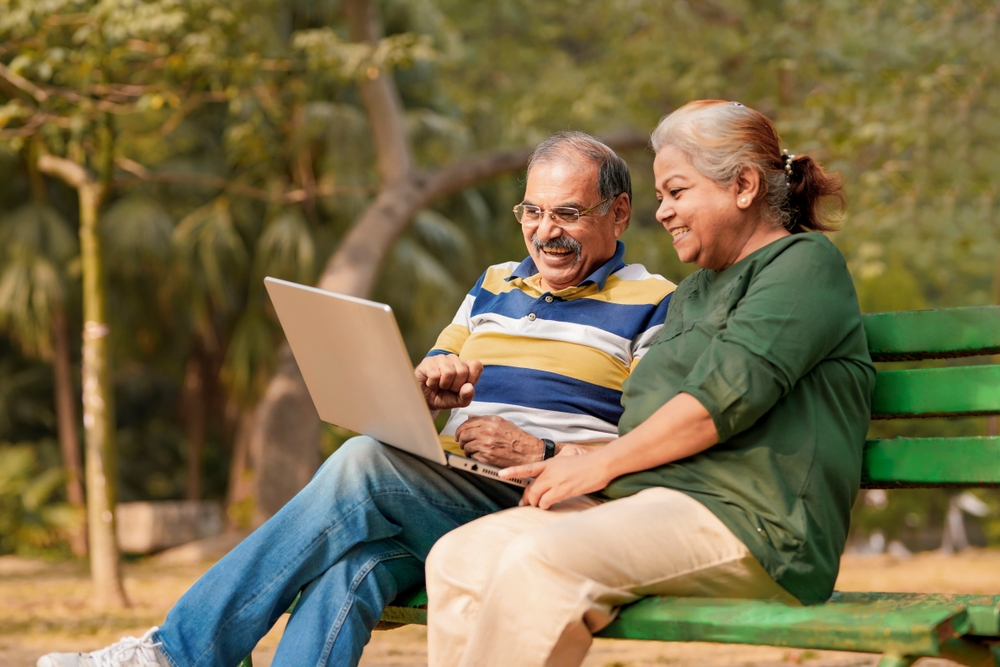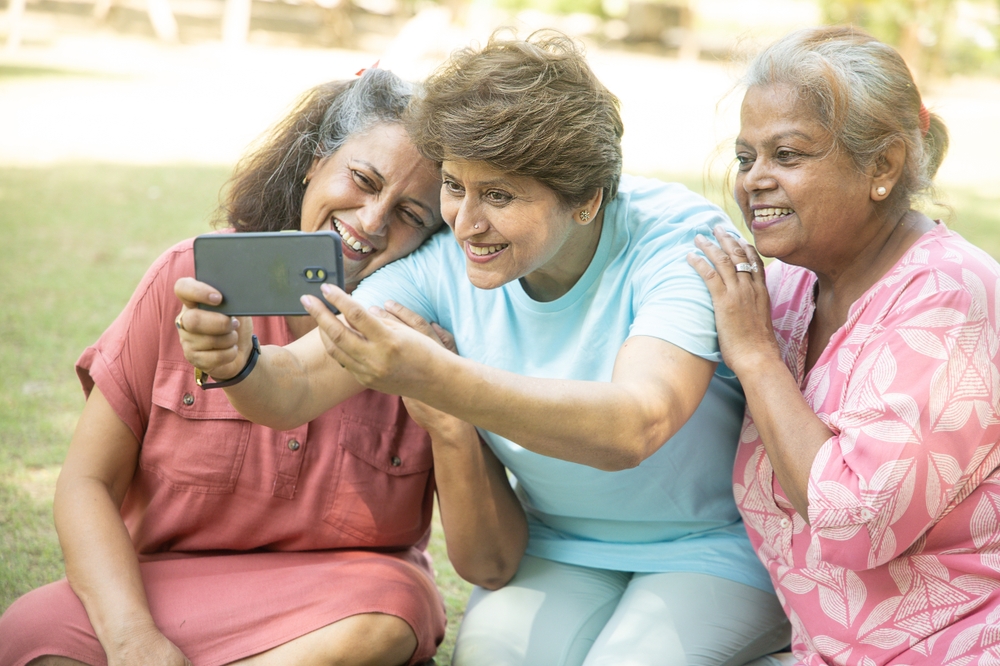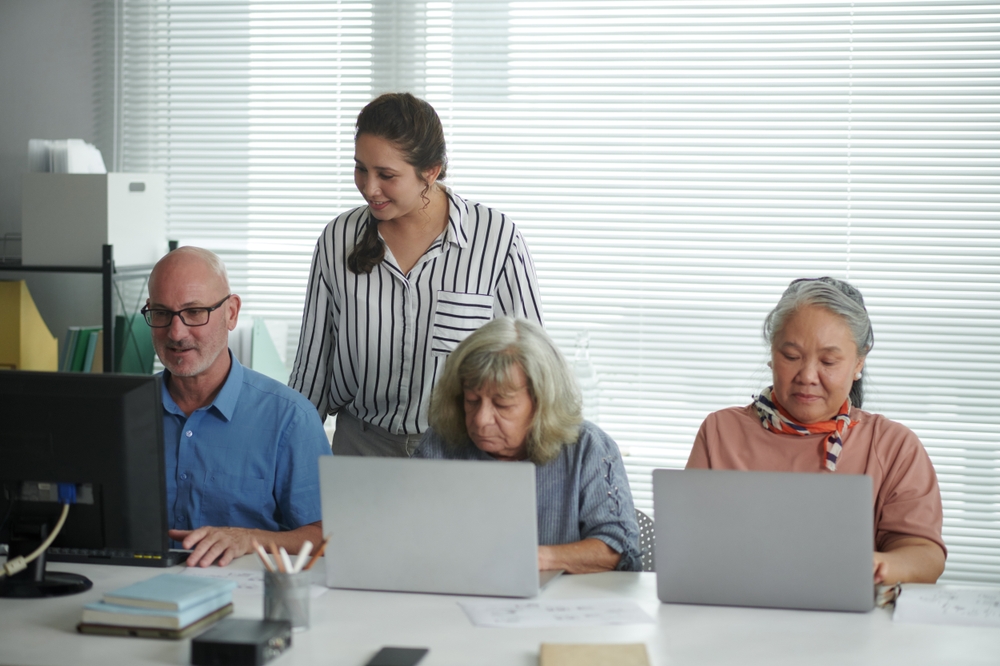Digital literacy has a triple benefit: it allows you to stay connected, access essential services, and maintain independence.
A digitally integrated society must develop inclusive technological solutions that cater to the needs of everyone, including older people. These solutions are indispensable tech tools that empower you to go through the golden years with ease, grace, and confidence.
A United Nations report states that the elderly population in India is set to surge to nearly 20% of the total population by 2050. This makes bridging the digital divide more urgent than ever before.
What Is the Digital Divide?
The digital divide is a term that separates the population into two groups: the tech-savvy younger generation who’ve grown up with access to evolving technology, and adults above 60 who did not have the same exposure.
The word ‘access’ doesn’t merely imply technological availability but also technological literacy. While you may have the financial means to invest in upcoming technological inventions, you may still face shortcomings in usage and adoption, which is entirely understandable.
You’ve witnessed multiple eras, from the no-frills typewriter to the Qwerty mobile and sleek touch devices. No wonder you find the technology jump hard to keep up with, if not sometimes outright overwhelming.
Say hello to the digital divide.
The Root Cause of the Digital Divide
For better context, let’s talk statistics before getting into the core issue underlying the digital divide. According to the ‘State of Seniors’ study by Antara and Access Media International, 77% of seniors in India are ‘text-savy’, using smartphones extensively for messaging and chatting. A close 53% use them for work-related tasks.
Based on these findings, one thing is certain: seniors are willing to learn and adapt to technological advances. The fact that 77% of seniors confidently navigate texting on what were once perceived as alien-like smartphones is nothing short of a marvel.
So, if unwillingness to utilise digital technologies isn’t primarily rooted in accessibility issues, what is the root cause?
Technological companies often lack senior-focused resources and training. Plus, their ‘top-down’ design process overlooks the valuable input of older adults on interface design. This approach fails to address seniors’ real-world constraints, leading to gradual isolation. Shengzhi Wang of the Design Lab at the University of California San Diego (UCSD) tells Forbes that seniors often became “frustrated” with new technology, making them feel incapable of using it and uninspired even to try.

How Does the Digital Divide Impact Seniors?
The digital divide can impact seniors in the following ways:
- Increases feelings of isolation: You may feel left out if you find it challenging to operate tech devices to communicate with friends and family.
- Limited entertainment: Navigating streaming platforms could entail a steep learning curve. For instance, Forbes reveals that older participants in a study found that after purchasing streaming services (like Netflix), they didn’t understand how to work them.
- Lack of remote medical assistance: If using medical alert devices and smart home equipment becomes challenging as you age in place, your access to remote medical assistance will be limited.
- Setting up tech equipment becomes a herculean task: You may not fully understand user manuals and how-to guides due to a lack of familiarity with tech terminology. According to a Forbes article, one participant describes their experience as,” Trying to hook a printer up to my laptop—they said to put in the IPP [sic IP] address. Uhh, I can’t
- find it… you know, and things like that, I don’t know what they are talking about.”
Barriers That Stand in the Way of Adopting New Technology for Seniors
Aside from technological barriers, there are other obstacles seniors may face when trying to embrace new technology.
Physical Barriers
Having limited physical mobility, health problems, and vision impairments could make using digital assets difficult, as opposed to someone healthier. Most smartphones and tablets today allow you to use a larger font size or include voice command tools.
Financial Barriers
Buying the latest smartphone may not be your first choice. New technology is not easy on the wallet, especially if you live on a fixed income. But don’t disqualify yourself just yet. You can always take advantage of seasonal offers or purchase a budget phone that is sometimes on par with, if not slightly better than, premium models feature-wise.
Mindset Barriers
Scepticism is a natural response to change, and ever-changing technology is no exception. You might value face-to-face connections above all forms of communication, making you wary of social media and hesitant to share your information for the world to see.
However, it’s important to remember that social media and other digital engagements are meant to complement, rather than replace, real-life interactions. They help you connect with people worldwide who share your interests—people you might never have met in your local community
You could find yourself on a flight to Himachal Pradesh for a week-long pottery class with your online friends, now turned real-life companions!

How Does Adopting New Technology Benefit Seniors?
Adopting technologies, such as the Internet of Things (IoT), or in simpler terms, interconnected ‘smart devices’ can dramatically support independent living. You can turn on appliances, call loved ones during medical emergencies, and even set daily medication reminders—all through voice commands.
Although still in its nascent stage, AI-backed Ambient Assisted Living (AAL) robots can make everyday tasks more manageable too, especially if you have mild cognitive and motor impairments. They boost speech interaction and look out for potentially dangerous events, like coming in contact with a wet surface and slipping.
You can engage in brain games to remain mentally sharp and enhance cognition. There are countless online games and mobile phone apps, from Solitaire and Sudoku to Chess. Those looking for light physical exercise will appreciate motion-controlled games, such as Nintendo Wii or Playstation, and the fitness tracker Fitbit can help gamify your daily step count.
Consuming global breaking news is also more convenient than ever with mobile phones, tablets, and computers. With just a quick Google search, you get to see all the latest developments, such as the Union Budget 2024 or what health precautions to take while travelling to the Paris Olympics.

Three Ways To Bridge the Digital Divide for Seniors
1. Lean into technologies that incorporate senior-friendly tech features
Limited tech exposure and cognitive changes accompanying ageing call for more user-centric designs that simplify navigation. There are numerous tech solutions designed with seniors in mind. Opt for apps that feature customisable font sizes and colour schemes, especially if you have vision impairments, and to prevent annoying mis-taps, choose user interfaces that display larger buttons and uncluttered layouts. In addition, mobiles with flashing screen notifications and vibration alerts can support hearing-impaired seniors.
Today, banking services have apps that simplify complex technical processes and regularly ask for your feedback to make improvements. A Bank of Baroda spokesperson tells Banking Frontiers, “We actively seek feedback from our senior citizen customers through surveys and in-branch feedback mechanisms to ensure that our services meet their evolving needs.”
2. Make use of relevant use cases
Technology can make your life easier, whether shopping online or video calling your childhood friend. Many companies are making their benefits relevant for seniors so you’re motivated to learn and seamlessly incorporate them into your lives. A standout example would be hospitals and clinics spreading the word about telemedicine, which allows you to connect with your doctor from the comfort of your home.
3. Join a training program
NGOs like Agewell Foundation and HelpAge India conduct digital literacy programs to help you keep up with the fast pace of growing technology. Sonali Sharma, communications director at HelpAge India, tells Mint, “We teach them how to use a smartphone, make online transactions whether it be banking or paying utility bills or make online bookings. This especially helps elders who find it physically difficult to stand in long lines to make bill payments.”
These programs serve as your window to independence, opening up a space to engage virtually through social media, book cabs, and make online transactions without hassle.









